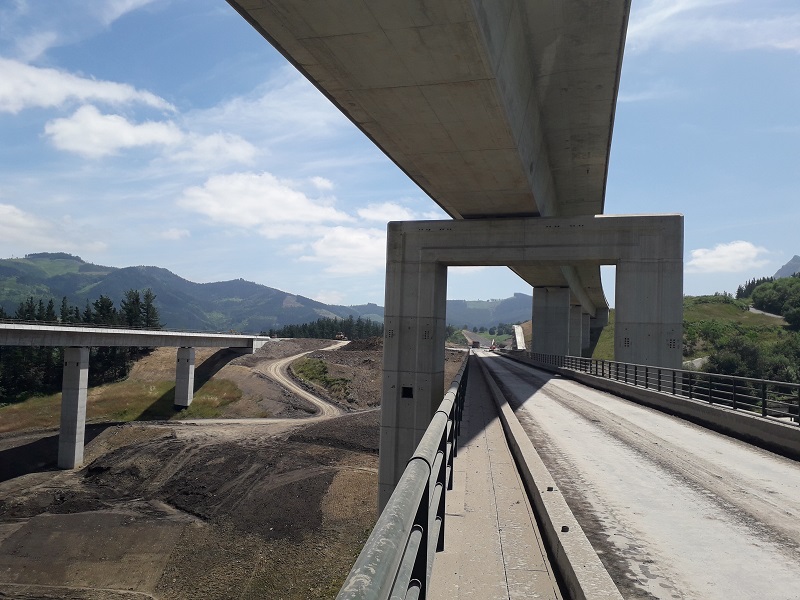In the Elorrio-Elorrio railway project, located in the Basque Country (Spain), various innovative measures have been implemented to minimize the impact on the surrounding environment.
Our commitment to addressing the climate emergency drives us to innovate construction procedures that better incorporate social and environmental aspects into our activities.
At Sacyr Engineering and Infrastructure, we are committed to developing environmentally friendly projects, always prioritizing sustainability in material use and construction processes.
The Elorrio-Elorrio railway project is a clear demonstration of this approach.
Currently in its final phase, the project features several innovative measures designed to minimize its impact on the surrounding environment.
Here are six key measures that make this project particularly sustainable:
Integration of Infrastructures at an Environmental Level
As our team completes each phase of the project, hydroseeding is employed. This method uses a seed projection tank with a cannon or distribution hoses to sow seeds.
Sowing is done on all slopes formed both by covering foundations and in the creation of embankments and clearings. The process is completed with shrub-type plantations in the final phase to ensure environmental integration.
Relocation of Excess Excavated Land
Another environmental objective achieved is the relocation of 850,000 cubic meters of surplus excavated land. This material was used to form embankments, such as in the extension of the Zumelegui Tunnel, promoting better integration with the surrounding landscape.
Restoration of the mouth of the Zumelegui Tunnel.
Environmentally Friendly Concrete
In the project, more sustainable concrete and cement was used, reducing the carbon footprint by 20-40% compared to conventional cement. These materials include 20-40% recycled content, with an emphasis on using locally sourced raw materials.
Waste Recovery
A key priority in the project’s waste management plan is the reuse and recovery of surplus materials. As a result, only 6-7% of the total waste generated has been discarded, aligning with our objective to minimize waste.
Water Use
To maximize water efficiency and prevent waste, several settling ponds have been installed near adjacent streams. These ponds act as filters before water reaches riverbeds and serve as decanters to provide water for road cleaning and dust suppression.
During the Zumelegui Tunnel excavation, a treatment plant was installed to prevent contamination of the Goikoa stream, a tributary of the Ibaizabal River.
Additionally, a second treatment plant was set up to handle runoff water (rainwater entering the river network), aimed at reducing suspended solids and protecting the biodiversity of nearby streams.
Arregiarte's leftover deposit.
Caring for Biodiversity
To ensure the free movement of wildlife, particularly the European mink, special crossings have been built into the drainage works along the route. These crossings include lateral steps raised above the water level, allowing animals to cross safely. Additionally, refuge areas for bats and protective sheets for amphibians have been installed at the entrances of one of the drainage works.
Fauna escape route.
